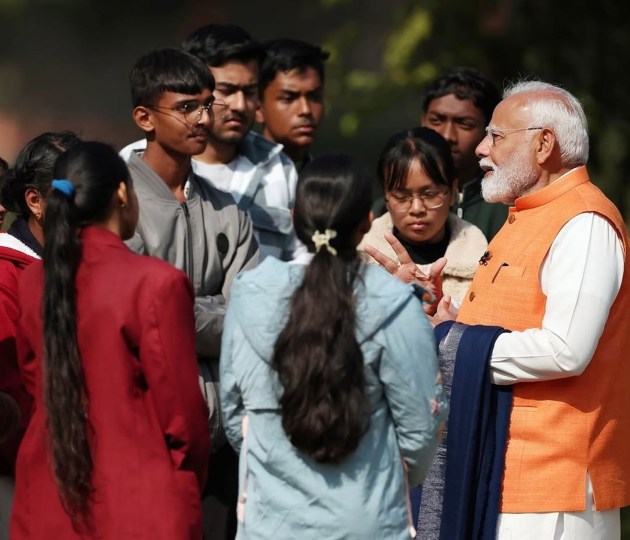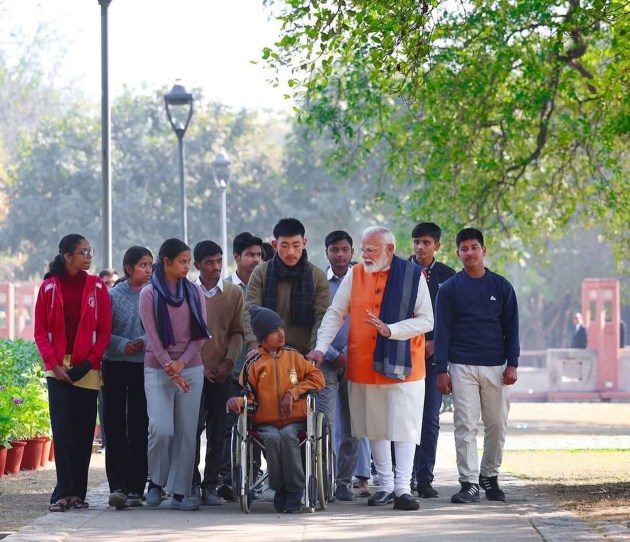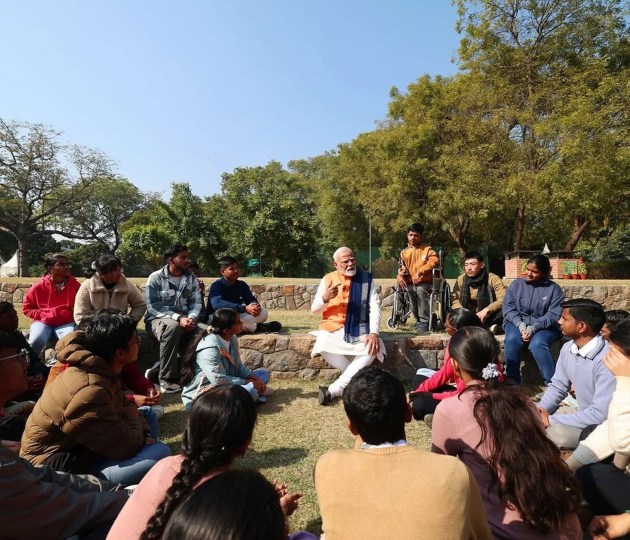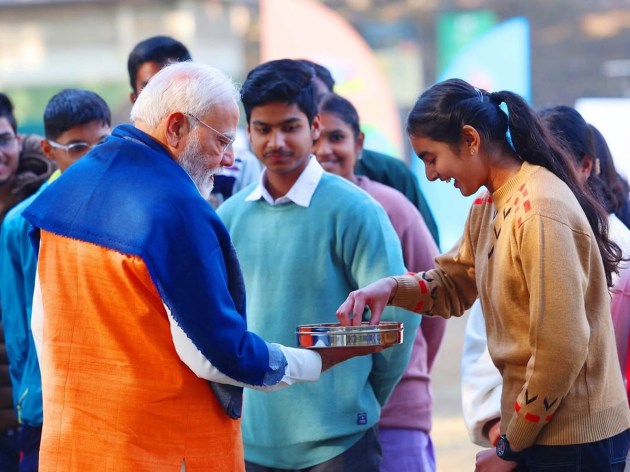PM Narendra Modi encourages people to read food labels; expert shares mistakes to avoid
Learn about 5 common mistakes to avoid when interpreting nutrition facts and ingredient lists for healthier eating
April 11, 2025 13:34 IST 1 / 7
1 / 7Moving beyond the traditional format of Pariksha Par Charcha, Prime Minister Narendra Modi recently had a chat with a group of students at Sunder Nursery. Pariksha Pe Charcha is an annual event organised by the government of India where Prime Minister Narendra Modi interacts with students appearing for board examinations. During the episodes, he answers students' queries related to exam stress and other issues. (Source: Instagram/@bjp4india)
 2 / 7
2 / 7"If every person in India starts reading labels, they will know what they are eating. My goal is to include health in the school curriculum in the next five years," said Prime Minister Narendra Modi. (Source: Instagram/@bjp4india)
 3 / 7
3 / 7Meenu Balaji, Chief Nutritionist at Pragmatic Nutrition, shared 5 common mistakes to avoid while reading food labels:
1. Not considering the serving size: A lot of times, when packages make any claim, say so many g of protein, it often denotes the entire pack. So you have to look for how much is there in a serving size. This can give a wrong perception of the actual nutrient intake. (Source: Instagram/@bjp4india) 4 / 7
4 / 72. Natural or low-fat aren’t healthy: Products labelled low- fat may have more sugar in it, to improve the taste. Similarly, just because something is natural it is not good for your health. May be a juice pack says 100 natural, but it may still have sugar or added flavours. This is not healthy. (Source: Instagram/@bjp4india)
 5 / 7
5 / 73. Missing out on sugar: Manufacturers conveniently use other names to label sugar like dextrose, maltose, cane syrup or high fructose corn syrup. This can give the impression of less sugar content than the actual one. (Source: Instagram/@bjp4india)
 6 / 7
6 / 74. Not looking for additives and preservative: Many so called health foods have artificial colours and sweeteners which are harmful to health. Sweeteners such as sorbitol or xylitol can cause digestive like bloating. (Source: Instagram/@bjp4india)
 7 / 7
7 / 75. Misinterpreting zero or lite labels that say “zero sugar” or “light” can be deceptive. A product labeled “zero” can still contain up to 0.5 grams of a particular ingredient per serving. Similarly, “lite” may refer to reduced fat, but it could still be high in calories. (Source: Instagram/@bjp4india)











